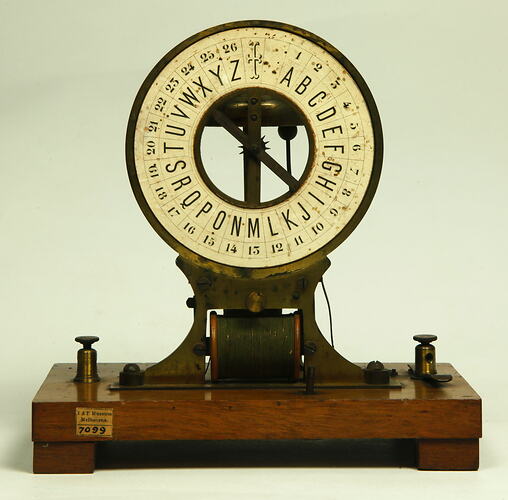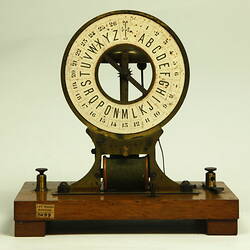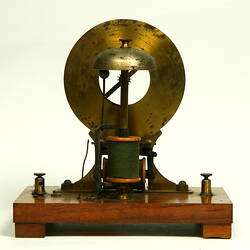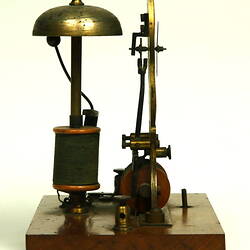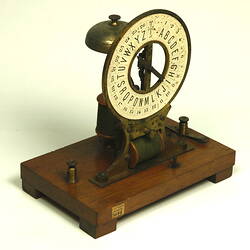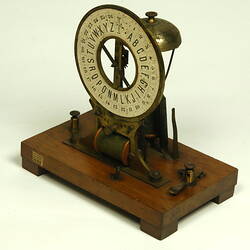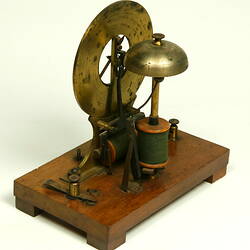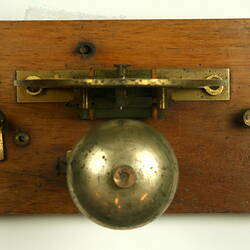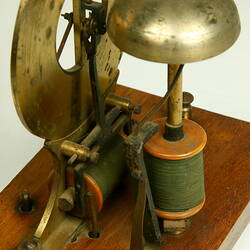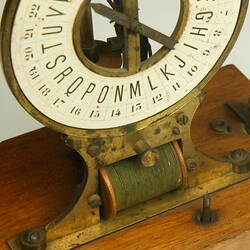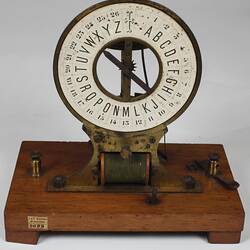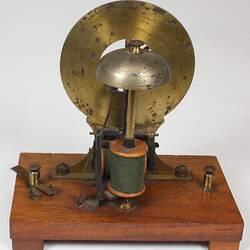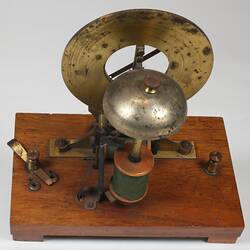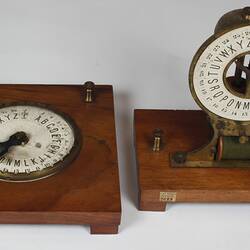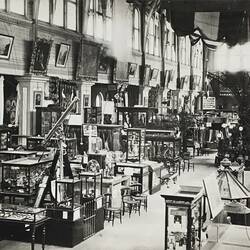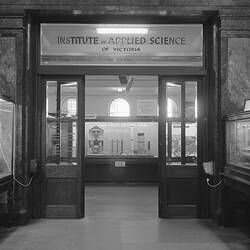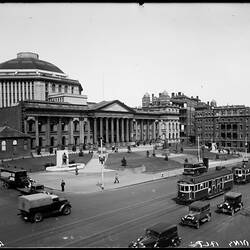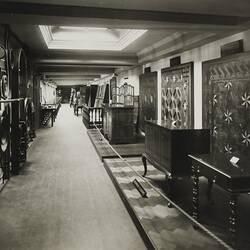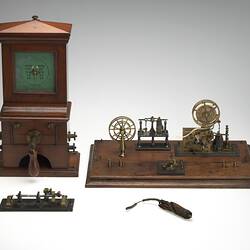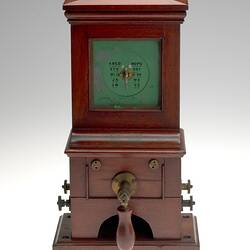Summary
Receiver of an alphabetical telegraph system of the Breguet alphabetical type. The other component of the system is the communicator.
This receiver is a component of one of the first electric telegraph systems which could be used easily by non-skilled operators. It did not require the operator to learn morse or any other code.
The communicator has a horizontal circular dial with the letters of the alphabet displayed around its periphery. An arm pivoted in the centre of the dial can be moved so that its outer end passes over the letters. Starting from a rest position the arm is rotated by the operator and stopped when it points at the letter to be transmitted. This movement transmits electrical pulses along the telegraph wires to the receiver, with the number of pulses corresponding to the letter being transmitted. The pulses cause a needle to move around the vertical receiver dial to stop opposite the received letter. Before the next letter is transmitted both the communicator arm and the receiver needle must be returned to their initial positions.
This receiver was probably originally sold in London. It is possible that the receiver and the communicator were part of a telegraph demonstration kit.
Physical Description
Wooden baseboard. Brass plate supporting vertical white dial with central hole. Dial is marked around its periphery with an outer ring of numbers and an inner ring of the letters of the alphabet. Support spanning central hole carries pivot for needle the tip of which passes over the letters on the dial. Horizontal wire coil beneath dial, Vertical wire coil behind dial. Metal rod through vertical coil carries bell at its upper end. Two brass terminals on upper side of baseboard.
More Information
-
Collection Names
-
Collecting Areas
-
Acquisition Information
Donation from (Estate of) Mr John J. Thompson, 27 Apr 1915
-
Manufacturer (Possible)
Breguet, France, 1870s
Breguet is the name of a famous firm of clockmakers. -
Distributor
Edward George Wood, 74 Cheapside, London, England, Great Britain, 1870s
-
Collector
Mr John J. Thompson, 12 Rose Street, Armadale, Greater Melbourne, Victoria, Australia, 27 Apr 1915
-
Inscriptions
Label beneath baseboard with the words; "Edward George Wood Optician Manufacturer of Photographic, Chemical MATHEMATICAL AND PHILOSOPHICAL INSTRUMENTS & APPARATUS 74 Cheapside (REMOVED FROM NO. 117) LONDON" Other text is included listing products supplied.
-
Classification
-
Category
-
Discipline
-
Type of item
-
Overall Dimensions
140 mm (Length), 85 mm (Width), 150 mm (Height)
-
Overall Dimensions
140 mm (Width), 95 mm (Depth), 145 mm (Height)
-
References
[Link 1] - accessed 3 December 2008
-
Keywords
